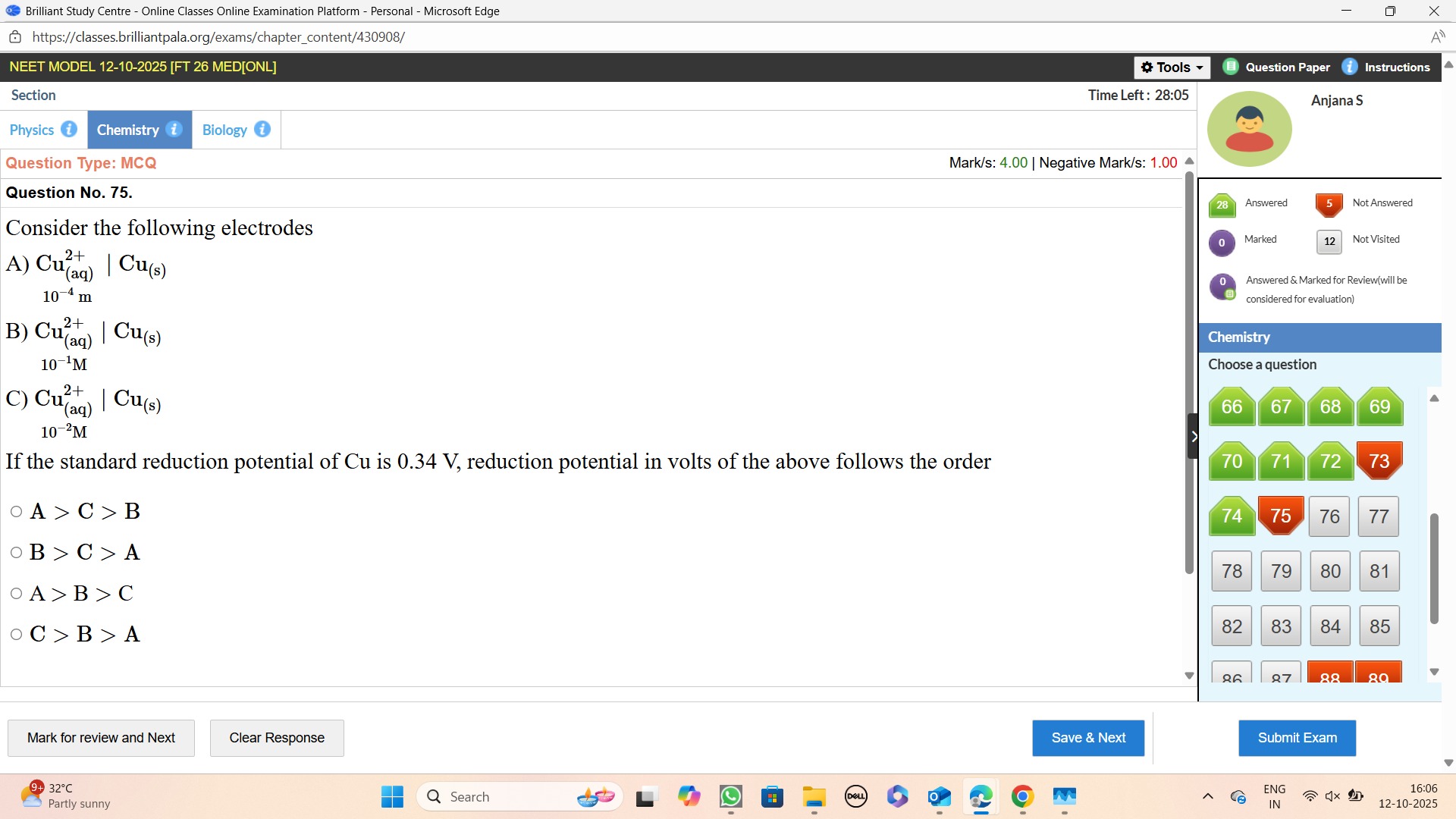Question
Question: Consider the following electrodes A) $Cu^{2+}_{(aq)} | Cu_{(s)}$ $10^{-4} m$ B) $Cu^{2+}_{(aq)} | Cu...
Consider the following electrodes A) Cu(aq)2+∣Cu(s) 10−4m B) Cu(aq)2+∣Cu(s) 10−1M C) Cu(aq)2+∣Cu(s) 10−2M
If the standard reduction potential of Cu is 0.34 V, reduction potential in volts of the above follows the order

A > C > B
B > C > A
A > B > C
C > B > A
B > C > A
Solution
The reduction potential of an electrode is given by the Nernst equation: Ered=Ered0−n0.0591log[Cu2+]1. Given Ered0=0.34 V and n=2. For electrode A: [Cu2+]=10−4 M. EA=0.34−20.0591log10−41=0.34−20.0591×4=0.34−0.1182=0.2218 V. For electrode B: [Cu2+]=10−1 M. EB=0.34−20.0591log10−11=0.34−20.0591×1=0.34−0.02955=0.31045 V. For electrode C: [Cu2+]=10−2 M. EC=0.34−20.0591log10−21=0.34−20.0591×2=0.34−0.0591=0.2809 V. Comparing the potentials: EB(0.31045 V)>EC(0.2809 V)>EA(0.2218 V). Therefore, the order is B > C > A.
